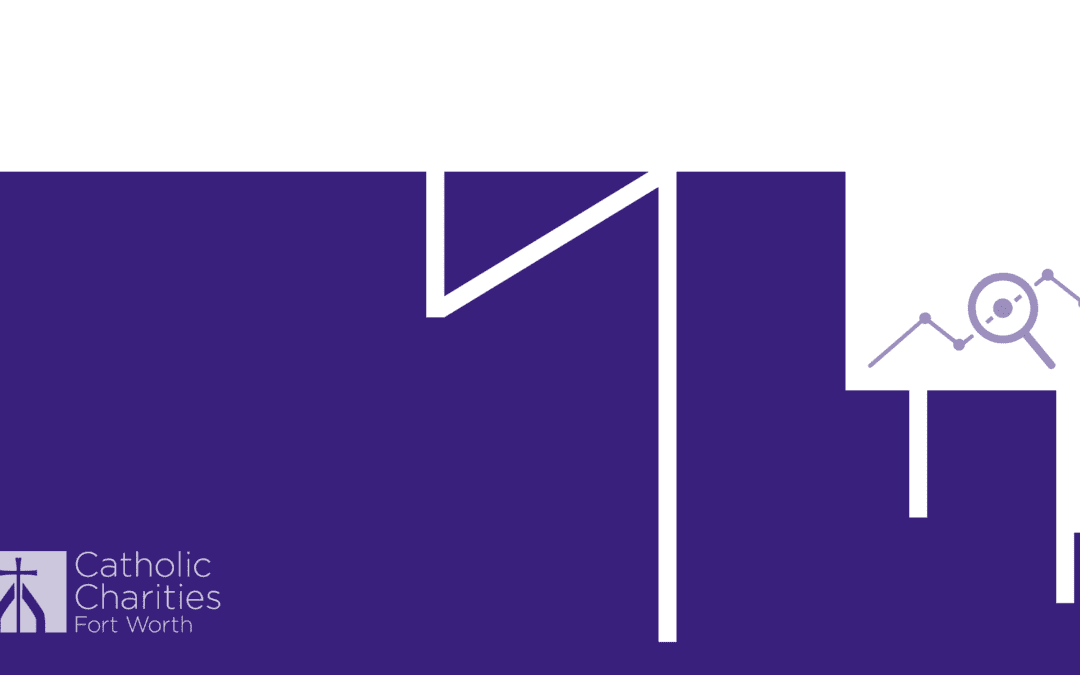Overview
2021 was another meaningful and humbling year of service for our agency. We continued to serve families impacted by COVID-19. We responded to additional unexpected crises, including Winter Storm Uri and the collapse of Afghanistan. And we embraced a large internal shift as we worked with our programs to transition to our new Out of Poverty Pathways framework. Below are a few 2021 highlights from our Research and Evaluation Team.
Total Clients Served
Individuals Received Financial Assistance Through Relief Services
Who We Served
Our agency’s reach is vast and diverse. Every year, we serve individuals and families across 28 counties. In the image to the right, you can see our reach by zip code in 2021.
Last year, we served primarily women and people of color, at 73 percent and 68 percent respectively. In addition, we served 1,088 refugees from 36 countries of origin.
%
Female
%
Male

Clients by Zip Code (2021)
%
Black or African American
%
Hispanic/Latinx/Chicanx
%
White
Clients by Country of Origin (Refugee Services, 2021)

In 2021, the countries of origin we served the most clients from were:
Democratic Republic of the Congo (293)
Afghanistan (269)
Cuba (128)
Internal Evaluation: Shifting to the Pathways
Our team took an intentional break from our normal evaluation activities in 2021 in order to shift all of our programs to our new Out of Poverty Pathways framework. This involved an intensive, multi-phase process through which we worked with CCFW programs to:
-
- Create a high-level systems map based on the appropriate drivers and predictors of poverty related to each program – giving programs a designated “home” on the agency-wide systems map.
- Revisit and revamp theories of change and logic models – identifying program-specific metrics, activities, and outcomes.
- Create a model of each program’s services to test and review the way services, data, and administrative actions work together.
- Build new measurement frameworks – essentially, how each program will collect data and measure client success.
All of this work has allowed us to refine our services and pave a critical foundation for our agency’s capacity to evaluate our programs – otherwise known as evaluation readiness. Our revised data infrastructure and new measurement frameworks will strengthen our ability to identify and celebrate each program’s unique impact.
What does that mean?
Each program now has more specific metrics and outcomes tailored to the service it provides within a certain Pathway. This allows us to more accurately articulate a program’s impact and affirm the diverse journeys we are a part of. Each client comes to us at a different point in their journey, so naturally neither the goals nor the finish line are the same for everyone.
Below are a few example outcomes by Pathway, reflecting the impact of our programs in 2021.
Individuals Improved Positive Financial Management Behaviors
Students Earned An Education Credential
Individuals Obtained New Employment
Upcoming Spotlights
As we round the corner of our Pathways transition, we are excited to return to you in 2022 with more research and evaluation insights! Stay tuned for topics such as the Multi-Dimensional Poverty Index, developing evaluation readiness, and resource stability topics such as housing and food insecurity.
Interested in more spotlights like this one? Get them in your inbox every month via our Research Spotlight Newsletter! Sign up below.
Our Research and Evaluation team works diligently to stay on top of current poverty-related research, as well as evaluate our own agency’s impact. This newsletter and blog series is an initiative to share our learnings and keep our supporters in-the-know.

